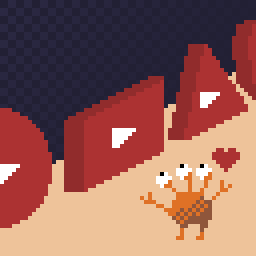
Sundry Sunday is our weekly feature of fun gaming culture finds and videos, from across the years and even decades.
Presented without comment (1 1/2 minutes).
The Flipside of Gaming

Sundry Sunday is our weekly feature of fun gaming culture finds and videos, from across the years and even decades.
Presented without comment (1 1/2 minutes).
C.B. Brown is a Youtube maker who has a modest, but not huge, following. Three months ago he made a video about an interesting collection of obscure games, and I know just enough about them to know he’s got really good taste. If you’re looking for hidden gems to play, they’re an excellent place to look.
Here’s the collection, which first went up about three months ago and is 20 minutes long. It covers:
C.A. Brown recently made another video with more really solid recommendations in it, but let’s give that video its own focus, in a few days.
It is not my purpose here to steal any of his thunder, but rather, to give you a sense of whether you might want to click through and see what he has to say, and view the gameplay, which I think will give you a much better idea of whether his picks are worth it. A 20 minute video is a considerable investment of time, but he has helpfully marked his video with chapters and links to each game’s section, so it isn’t hard to navigate. Look and see.
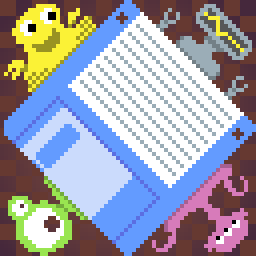
We love it when we find weird and unique indie games to tell you all about! Our alien friends to the left herald these occasions.
A generation of Windows users spent time productively by running Minesweeper, a standard inclusion with Windows from the days of Windows 3.0 through Windows 7, until they decided that it Must Be Monetized, and switched out for a free-to-play, ad-riddled version of the loathed Microsoft Store, just one of thousands of little crappages that have made up, and continue to comprise, the enshittification of tech.
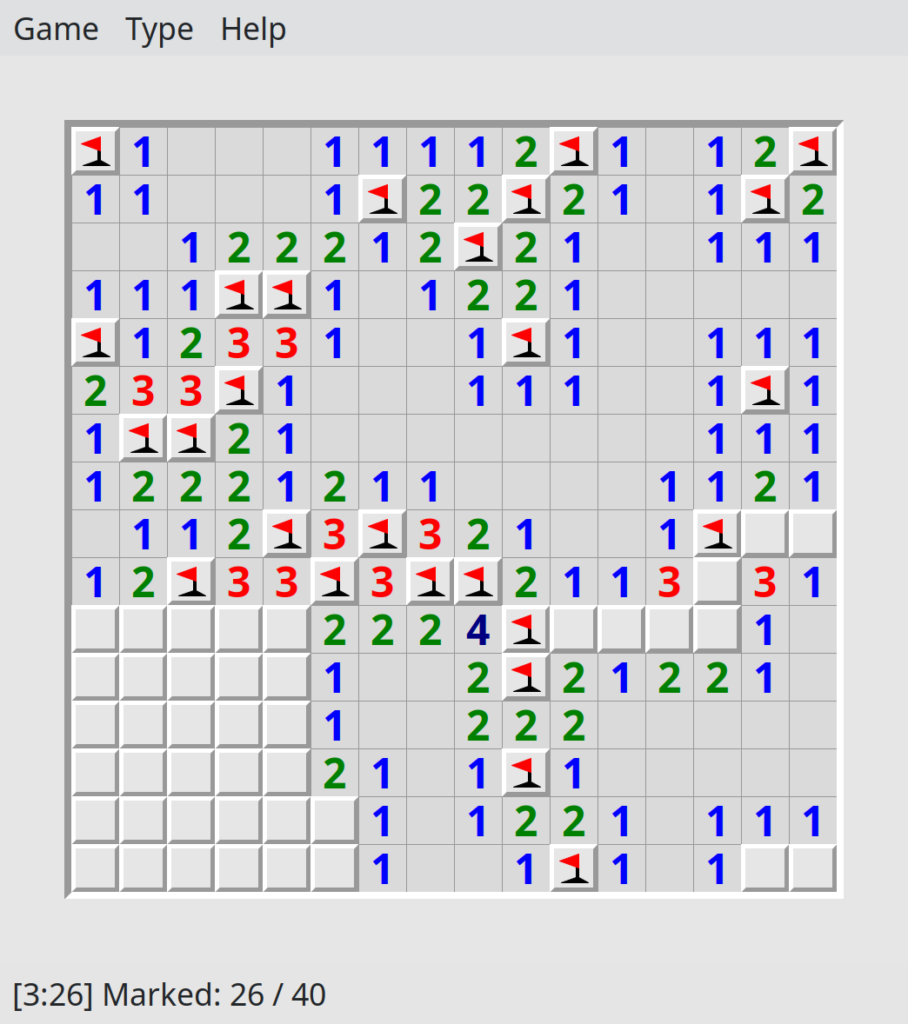
Well, there are other ways to play Minesweeper that don’t require tithing your attention to the marketing department of Microsoft. An open-source version for many platforms is included in Simon Tatham’s Puzzle Collection, a collection that’s playable for many platforms including web browsers, and which is still one of the great unknown treasures of the internet. (If you’re running Linux, you might be able to find it in your distribution as Mines.) There’s another free version for Linux and Windows called LibreMines that can be found on Git, and KMines for KDE.
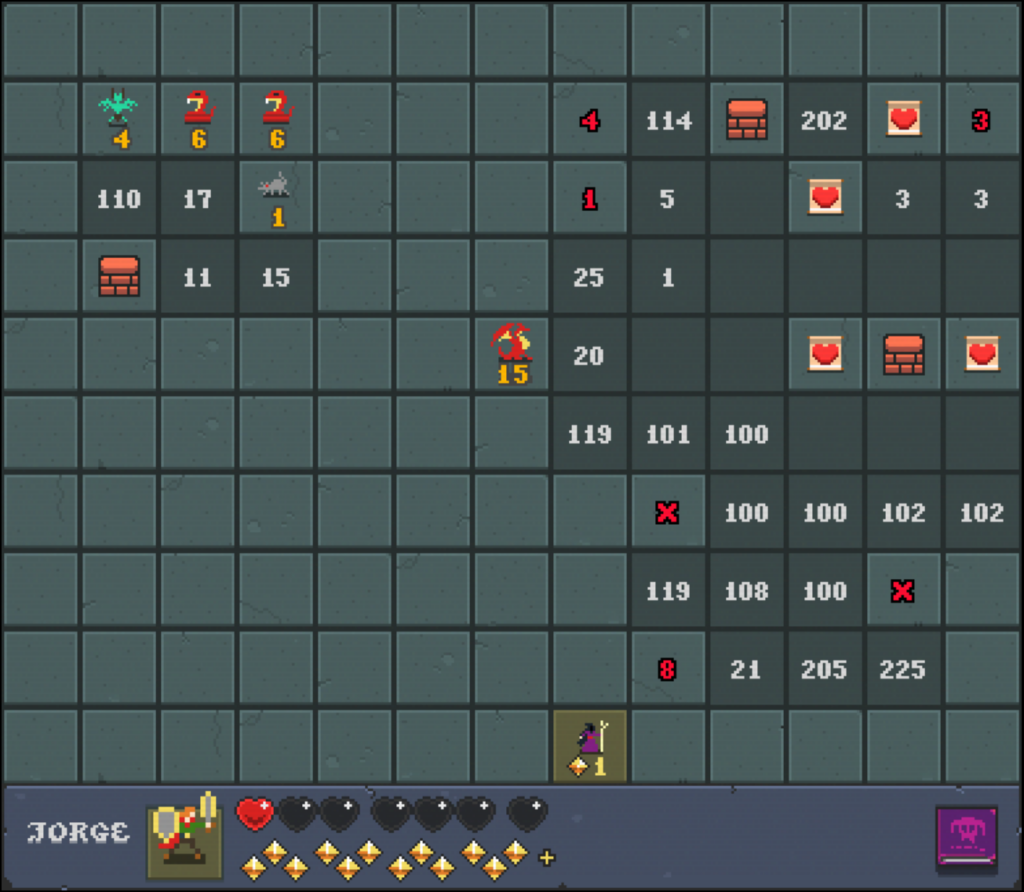
In the past week there’s been released on itch.io a fantasy version called Dragonsweeper, which has several interesting innovations. It was inspired by Hojamaka’s Mamono Sweeper (Japanese), as as Hempuli’s Mamono Mower. Hempuli (the creator of Baba Is You and a whole host of Sokoban-inspired puzzles) also made Cavern Sweeper, which I believe I’ve linked to before.
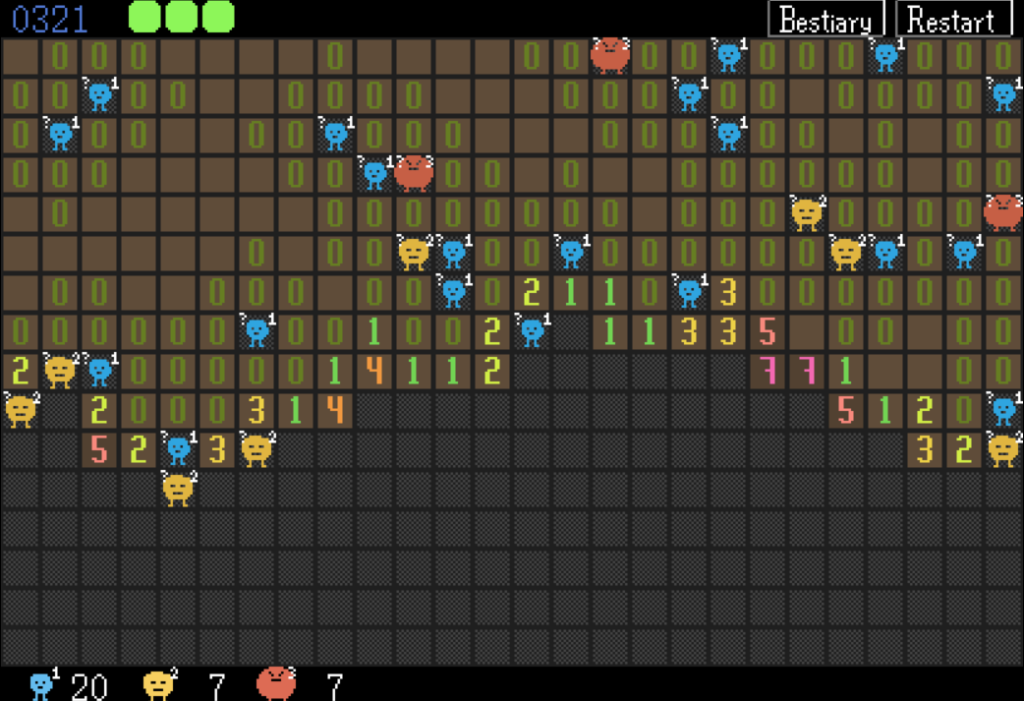
But probably the ultimate in this category is still the 12-year-old Desktop Dungeons, which is commercial but well worth it, and its 3D remake Desktop Dungeons Rewind.
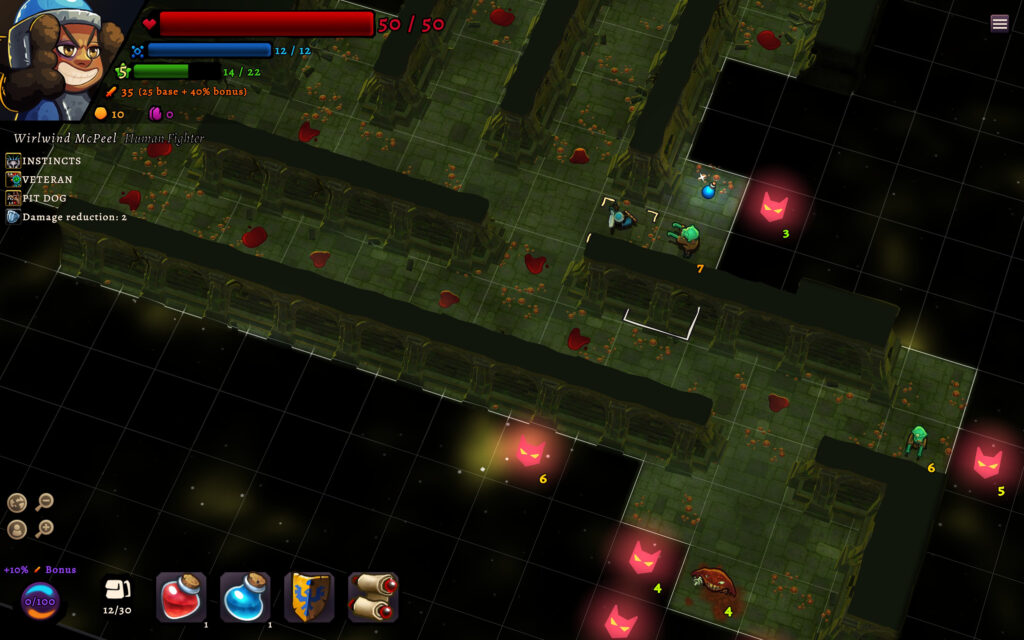
Every game linked here is worth it. To call one out specifically, Desktop Dungeons has great depths that’ll take you many play sessions to uncover.
All of these games involve hidden terrain that hides things that are dangerous, but let you deduce their position using clues in the squares. Many of them let you fight back against those things, if you manage the level of danger you face. Desktop Dungeons changes that a bit by letting you see monsters freely without danger, but also making unrevealed squares themselves a resource that you must manage, since exploring them helps you up and restores your magic, but at the cost of also healing any monsters you’ve wounded without killing them.
Dragonsweeper is current quite the indie darling. It hides both monsters and mines in the unrevealed squares, although the mines are worth 100 threat points each so their numbers can’t be confused with those of the other monsters. It also has special generation quirks for several of the monster types, and once you understand them it makes the game considerably easier (although, like classic Minesweeper, once in a while you’re still forced into guessing).
There is a complete solved playthrough of Dragonsweeper on itch.io’s Youtube channel (11 minutes), but for a change I’m not going to embed it, as it will probably spoil some of the finer points of playing it, and in a real since, learning how to play a game like Dragonsweeper is the real fun of it, and not just the execution of a strategy that’s handed to you. So go and try it yourself, and don’t sweat the inevitable lost games! You’ll be picking up essential information for when you do start winning, and besides, losing reveals the whole map, and that has much to teach you about how the monsters hide.
You do a daily blog, you plan a post for a day, and sometimes it doesn’t work out. It happens. Today’s post was going to be a romhack but it turns out it didn’t meet my fairly high standards for romhacks. I’m really picky about them. It was a Super Mario World hack with a strong and interesting theme, I was excited about writing about it, then there was a long jump that required bouncing off a flying turtle right in the first level, and that was right after a couple of tight jumps out from beneath two Thwomps with Podoboos jumping all around, then when I finally got by it, there was a room where water was unexpectedly instantly lethal, as if it were spikes. I don’t have time for that.
I play these things to write about them, but I played for fun too, and that kind of business I don’t consider fun, and I don’t think you’d enjoy it either. Games are meant to be fun, not excruciating tests.
I won’t give you the name of the hack because it’s one of hundreds that are like that. I have nothing against its creator, artistically it didn’t look bad. It just was a pain to play.
So instead, have a 2017 interview on Atari Compendium, with long-time Atari Games programmer Michael Albaugh. It’s all text, but I’ve been meaning to ease up on the number of Youtube videos I link. Don’t worry, I’m still going to bring you tons of them, because for worse or even worse, there’s a lot of gaming content there, and Google certainly likes pointing me to it, may them and their “AI Summaries” boil in oil.

Albaugh played the original commercial arcade game Computer Space in a Sears department store in 1974, soon after joined with Atari Inc. while Nolan Bushnell was still at the helm, and stuck with them through to 2000, just a few years before WMS shut them down. The first game he wrote code for was Pool Shark, a black-and-white machine released soon after Tank 8. His last (according to MobyGames) was Gauntlet: Dark Legacy, and support on San Francisco Rush: 2049! He worked on Atari Football, Marble Madness and Rampart. In games, there are very few careers longer than that, and I’m glad that he is telling his story.
I’d like especially to point out his concluding statement:
Cliche, but it went from a craft with small, tight groups, like a local theater company, to more like Hollywood, with giant teams and management structure that would make the Pentagon swoon. And of course a real hit-driven, cautious agenda. In short, no thanks. There are still interesting things going in the demo scene, indie games, and interactive fiction, though.
Back when Nintendo was a little freer about licensing their games and characters out to other companies, Hudson Soft released for Japanese home computers a strange variation of Mario Bros. (different from their strange variation of Super Mario Bros.), called Punch Ball Mario Bros. It’s pretty strange.
An example of its strangeness, recently pointed out on Bluesky by Mario obscurities blog Supper Mario Broth, and boosted by Ars Technica’s Kyle Orland. It turns a simple scenario in which two plumbers try to clear pests out of a sewer into the story of humankind’s rise as a tool-using species. Image from Supper Mario Broth and text pasted from the Mario Wiki. Check this out!

いつの頃だろうか、人類が道具を持つようになったのは……。初めは動物
の骨、石のかけらを利用した単純なものであった。人類は英知をふるい、道 具を改良していった。それが、火を使い、風を利用し、そして今では原子力 をも駆使し、高度な文明を築き始めたのである。 だが、ある一方ではまだ石を利用しているだけの人々もいるのである。彼 らはどのようにして獲物をとり、外敵から身を守るのであろうか。彼らは強 力なジャンプ力と石の玉を持っているだけである。それをうまく利用し、彼 らの身を守って欲しい。 ここに、そういった人々のうちの2人を紹介しよう。そう、彼らの名前は マリオとルイージ。彼らが高度な文明を身につけるのはいつになるのだろうか。
At some point, humans gained the ability to use tools… At first, they were simple things using the bones of animals and fragments of rock. Using their wisdom, humans improved their tools. Harnessing fire, wind, and nowadays even atomic energy, they began to build up a sophisticated culture.
On the other hand, however, there are people who still only use stone. How do they catch game and defend themselves from outsiders? Using only their strong jumping power and stone spheres. They use those skillfully to defend themselves.
Here, we introduce two such people. It seems their names are Mario and Luigi. Will they ever learn about sophisticated culture?
Will Mario and Luigi ever learn about sophisticated culture, or are they the same as the lowly, technology-hating hedgehog, bandicoot, and bone-headed caveman? Time will tell.
The weekly indie game showcases highlight the many games I check out, and please reach out if you would like me to cover your’s. All games shown are either press keys or demo plays of indie games.
0:00 Intro
0:14 Astronimo
1:43 Yeetus
2:47 Roots of Yggrdrasil
5:25 Sticky Business
6:17 Ludde
7:33 Kapital Punishment 22XX
Here’s something unusual around these parts, a comparison, from Sega Lord X, between different home ports of Sega’s Virtua Racing arcade game (19 minutes).
Virtua Racing was released to arcades at a time when polygonal racing titles were the province of Namco and Atari Games, and it was pretty astounding at the time. The efforts to make hope ports of it were largely noble efforts. The arcade game got its 30fps render rate by using a bunch of powerful (and expensive) hardware. The Genesis version cost $100, and used a Super FX-like custom co-processor, but even then could only get up to 15fps.
The star of contemporary efforts has to be the 32X version, which almost compares to the Saturn version, which wasn’t developed by Sega. It doesn’t surpass the Saturn release, but it’s competent. Here’s a side-by-side comparison (7 1/2 minutes). It’s kind of hard to believe the Genesis is producing the footage on the left side of the video, even if it is being heavily supported.
In arcades, Virtua Racing, while released in different models and cabinets, was the only game by that name that Sega would make, although the Daytona and Sega GT series would hold aloft the waving polygonal banner. More recently a decent 60fps port was made by M2 for the Nintendo Switch as part of the Sega Ages series.

Sundry Sunday is our weekly feature of fun gaming culture finds and videos, from across the years and even decades.
It’s a maxim among D&D players that the deadliest thing the DM has in his arsenal against players is the lowly pool, stream, river, pond, lake or ocean. (Zee Bashew has an entertaining 3-minute video about this.) There’s just so many ways to kill a PC involving water.
Well, this isn’t just a Dungeons & Dragons thing. Sierra On-Line adventure games had many excuses to off a wannabe hero for just thinking about approaching a body of fluid, as Sierra Art’s 4 1/2-minute compilation video demonstrates. Whether it’s drowning in it, being swept down current by it, creatures living in it, or it actually being deadly acid: if it’s liquid, it’s fatal.
That’s not the only adventure game in which the wet stuff will kill you. Famously, the only way to actually die in The Secret of Monkey Island is to hang around too long under water. If you wait for ten minutes down there, Guybrush Threepwood will actually drown, which replaces the action verbs with Bloat, Stare, Bob, Rot and Order Hint Book. (2 minute video)
You can drown in Return to Money Island too (2 1/2 minutes), which is funny because the game is presented as Guybrush telling of his adventure in discovering the secret of Monkey Island to his son, wrecking the whole premise.
Not a damnable Youtube video this time, but an honest-to-frog text post I’m linking to! A 2021 post from the blog Brandon’s Thoughts explains what you might be wondering if you watched such events like AGDQ 2025’s Super Mario Bros. race. Well, okay, I’ll give you a video (33 minutes), but it’s not the point of the post this time:
The analogy often given is to think of a bus that leaves every 21 frames, and levels can only end by getting on that bus, and so other than in the last level (which has no new level to load at the end of it), improvements in Super Mario Bros. can only happen in 21 frame increments. If you save a frame or two in a level, but it’s not enough to make the previous frame rule, it’s not enough to take the previous bus, you’ll just end up waiting for it to happen anyway.
But what a weird thing to have! Lots of games don’t have frame rules like this, so why does Super Mario Bros? What advantage did it give the game’s code to be implemented this way? Why did the game’s programmers, according to MobyGames Toshihiko Nakago or Kazuaki Morita, do it?
I’m not completely sure, but Brandon explains why they happen in his blog post. I can summarize the the details here, and give a theory.
Super Mario Bros. uses a bunch of timers in its code. Quite sensibly, they’re laid out in a region of memory so they can all be updated by the same bit of code, a loop that cycles through them and counts them all down, one per frame, until they reach zero. It doesn’t do anything itself when they reach zero; the timers are each checked in other places by the code that needs to know if enough time has elapsed, and which then resets the timer so the countdown can continue on the next frame.
Many of these timers are short, like the code that determines when Mario emits a bubble in an underwater area. But all of these timers are single bytes, so the longest they can last are 255 frames, which at 60 fps is just a few seconds.
In order to track longer periods of time, but keep the same mechanism, there’s a subset of these timers that don’t count down every second. These timers are only checked and decremented every 21 frames, which is triggered when a special extra timer goes off. The intent was probably every 20 frames, but it uses BMI, Branch if result MInus, for the check instead of BEQ, Branch if EQual to zero, meaning it takes an extra frame.
Long timers are a bit less precise than short ones. When a long timer is set, the inner timer, the one that decides when long timers count down, could be at any point in its cycle.
This timer exists to determine when the second set, of longer timers, counts down. So, those timers’ lengths are around 21 times longer than the other timers. This is the source of the frame rule. After a level has finished, the game displays a black status screen with text announcing the number of the next level (“WORLD 1-2”) and the number of lives Mario has left. This code uses a long timer to keep the message on screen for longer than 255 frames. But it has the side effect that levels can only begin at 21-frame intervals.
Other periods of time tracked by long timers, such as Mario’s invulnerability time after taking damage and and duration of invincibility powerups, are also framerule based, and can vary by around a third of a second in length.
Super Mario Bros.’ ROM space is a bit cramped, and the timers are probably implemented in this way for space efficiency. Brandon points to evidence that the game had been optimized to save space to as to squeeze in more level data. In most cases it doesn’t matter that long times vary slightly in length. Gross duration matters more than precision here, but the implication is that framerules exist. Funny, that.
Super Mario Bros. Frame Rules (brskari.com)

We love it when we find weird and unique indie games to tell you all about! Our alien friends to the left herald these occasions.
It’s been over a year now since Blaseball, beloved highlight of the pandemic lockdown, set its multiple suns for the last time. Its malevolent spinning peanut god ceased its ranting, and its guardian angel squid put away its concessions. If you don’t know what I’m talking about, the blaseball tag here might fill you in. (We love tags! Explore them a bit and you’ll find strange and unusual things.)
In summary: for nearly three years, from June 2020 to June 2023, a small plucky company called The Game Band simulated games of a strange, horror-themed variation of baseball, and allowed users to bet fake money on the outcomes. The synthetic players pitched, batted, fielded, were incinerated, became reincarnated, went undercover, escaped via secret passages and fought gods like that huge spinning peanut and the concept of money itself. It wasn’t bad for a simulation that players could never directly influence: the closest they could come was by spending their hoarded fake wealth on votes to change the rules and edit the players and teams.
In its time it inspired a vast wiki (unaffiliated with Fandom, thank the Squid), an official podcast, a stats reference site, a news network, both official and unofficial explainer videos, a huge pile of fan art, pretend trading cards, and a terrific band. It was probably impossible to keep going indefinitely, but it was nice while it lasted. I’m not the only one who fondly remembers it: the site Just Baseball published a ringing remembrance last year. Here’s that squid again, one more time, for I never get tired of seeing this animation.

So now there’s a big superfluous-L-shaped hole in our hearts. There have been attempts by others to fill the Infinite Siesta, but none of them have nearly the panache or popularity of the original. This concludes this explanation, but no doubt I’ll be doing it all again in a year or two. Moving on.

So, what is this new thing that might fill the void left by Blaseball? ioBaseball is a very new project that combines Blaseball’s play sim with Balatro’s deck building. It sounds like a cooked-up Buzzword Stew, but even in its very early prototype form there are some interesting ideas there.
ioBaseball is so early-on that the site proclaims that it’s only a demo, and I believe them. Currently the whole game runs in your browser, and log-ins aren’t supported yet. It only saves the play state at the beginning of each game day, so be wary of browsing away from the page accidentally. It doesn’t look like it was made to provide indefinite play as it stands, but it’s worth exploring for a little while.
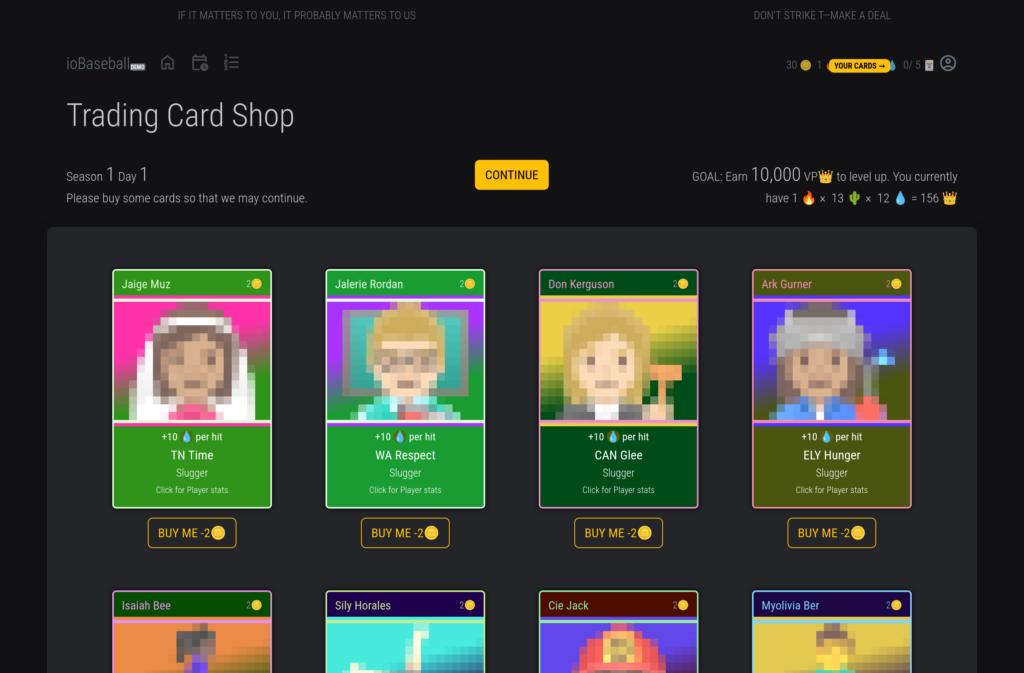
The game begins with a collection of teams and their players. As with Blaseball before it, none of these teams or players are “yours,” and you have no control over any of them. In Blaseball you could adopt a team as your “favorite,” and a player as your “idol,” and get rewards according to how well they did. That is replaced here with a system of trading cards.
The main types are Slugger cards and Pitcher cards, each representing a specific player in the league, and Team cards. Each card gives you a number of one of three colors of “magic points” whenever its depicted character/team does something positive. This means that buying trading cards is making an investment, like buying stock for dividends.
Slugger cards give you “blue” magic points, shown as water drops, when its player gets a hit that puts them on base. Pitcher cards give you “red” magic points, with a fire icon, on its player striking out a batter. And, Team cards earn “green” magic points, little cacti, upon that team scoring a run. You’re free to buy any cards you want, up to your hand size limit, so you aren’t limited to just players on the teams you have cards for, but the different kinds of cards cost different amounts of gamecash (not real money, but instead fake gold pieces), and pay out different amounts of MP. Pitcher cards are by far the most expensive, at 10 gold each, but a good pitcher can be a reliable earner of red MP throughout a whole game.
You need all three kinds of MP. Despite their name, in the current version of the game you can’t cast magical, baseball-related spells with them (presumably with names like Arms of Ruth, Berra’s Wisdom, Curse of Casey, or Tinker to Evers to Chance). Instead they are what get you your experience, or as called here Victory Points. The game multiplies together the three colors of MP you have, and that’s your VP total. Then it goes like Balatro: at the end of each day of games, you have a target score to meet. If you succeed, you lose all your magic points of every color, gain a “Level,” and start the next day with a higher goal. If you don’t quite make the objective you lose one of the five lives you begin with, but you get to keep the MP you had, so the next day you just have to make up the difference.
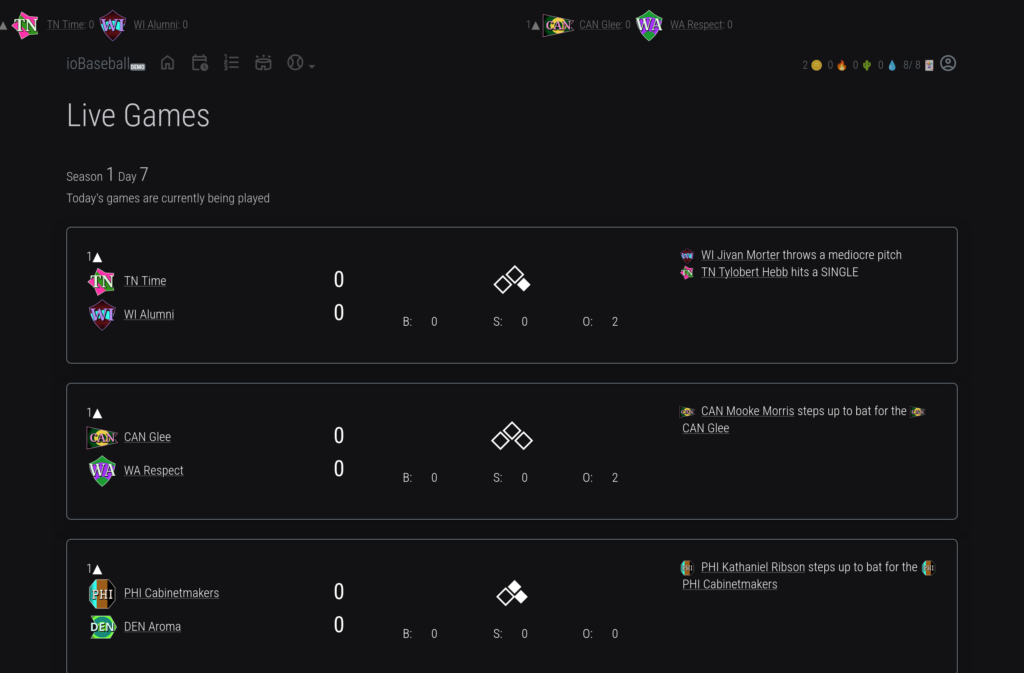
One aspect of this system some of you may already realize… if you have zero of even one of the colors of Magic Points, it means you have zero Victory Points. You must have a source of income of all three colors. Not just that, but baseball, even simulated baseball, is a very random game, prone to unexpected upsets and blowouts. If the winds of fate mean that one of your types of cards produces nothing on a day, then you earn nothing, at all, on that day! The days of the seasons have randomly-assigned games, sometimes a team doesn’t play on a day, and if that team is the only one you have pitchers or sluggers for you’re going to lose a life that day.
To overcome this, it’s essential to diversify, buying multiple cards of all three types. You start out only able to have five cards, but you can use your excess gold to buy expanded slots from a system of upgrades. These work like a mixture of Balatro’s hand levels and vouchers. Each provides a benefit that gets more expensive the more you buy it. At the start of Day One you only have the upgrade that increases your hand size, but each time you lose a life, you get the chance to enable one of three new kinds of upgrades. Some of them are obviously good, but a few, the Fountain, the Boar and the Illusionist, don’t tell up front what you’re buying, and leave you to figure them out. Some upgrades unlock new kinds of cards, that pay off in a variety of ways. One upgrade reduces your Level by 2, which is nowhere near as bad as that might sound. It might be the most important upgrade, and it’s the one that rises in price the fastest.
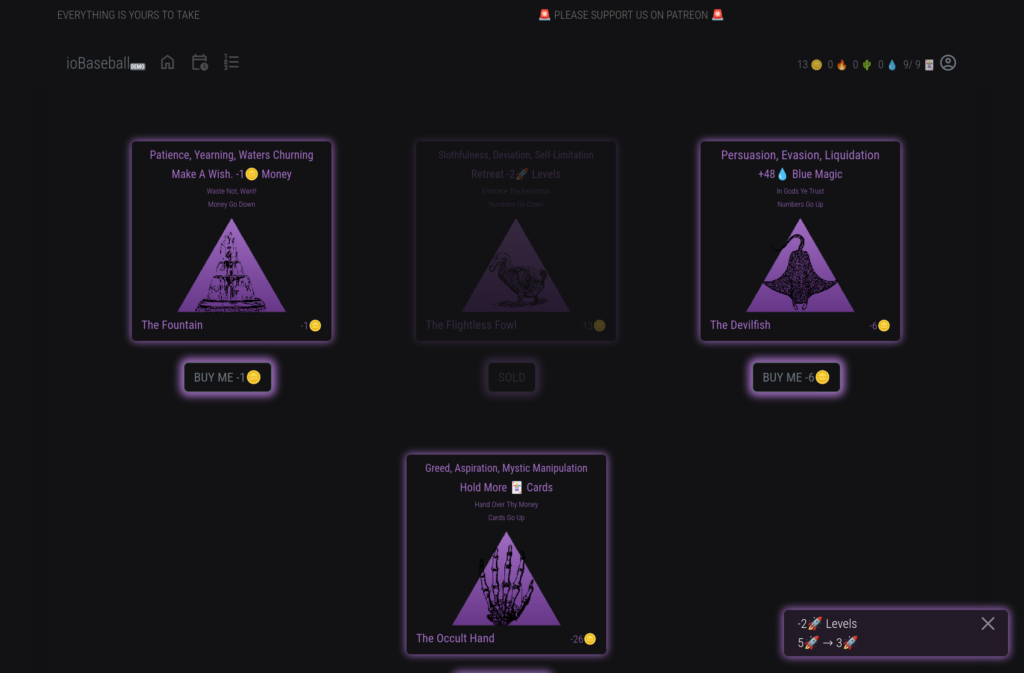
It’s really difficult to do well, especially at the beginning when your only clues to how well a player will perform are unexplained Blaseball-style stats with names like “thwackability.” After a few days the Stats pages on each card will start to give you a good idea of how valuable each player is. In this demo version the player and team stats are not randomized, and you get the same choices of what player cards to buy every day, so your intuitions of which players and teams are worth the gold and hand slots can build over multiple tries. (Note: since I wrote this the game has been updated, and now now only can you select a season scenario, but the world’s stats are re-rolled every real-world month.)
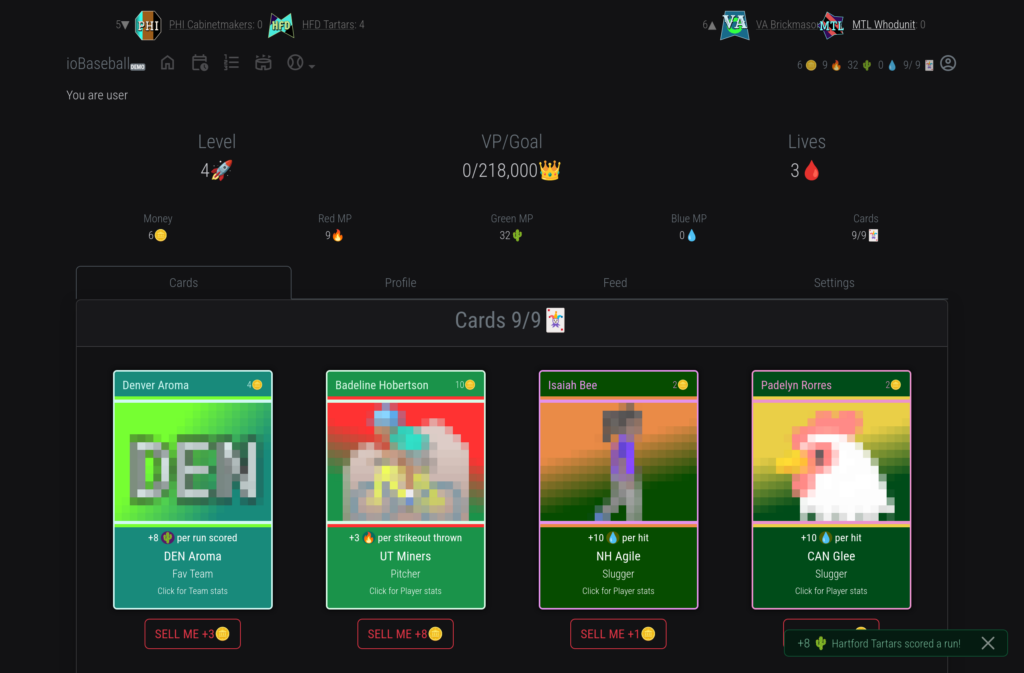
The interface, while bearing some polish, has its glitches. Important game functions are buried, in the style fashionable at the moment, behind Mystery Icons at the top of the page, and I tended to get lost for my first couple of plays. During the game day, you’ll probably want to watch the action (which is all text, this is a Blaseball-inspired game, after all) by clicking on the icon of the little stadium with the three pennants. To see your Victory Points and current hand, and to declare game options, you’ll want to click the little line of numbers at the top-right of the page. It is here where, under the Settings tab, you can speed the simulation speed up from the excruciating NORMAL, up past Bison, Tiger, yes even Hedgehog, to FAST, and experience an entire day of simuball in a couple of breezy minutes. Oh, how rorm* it would be if real baseball had the FAST option, or even just Hedgehog!
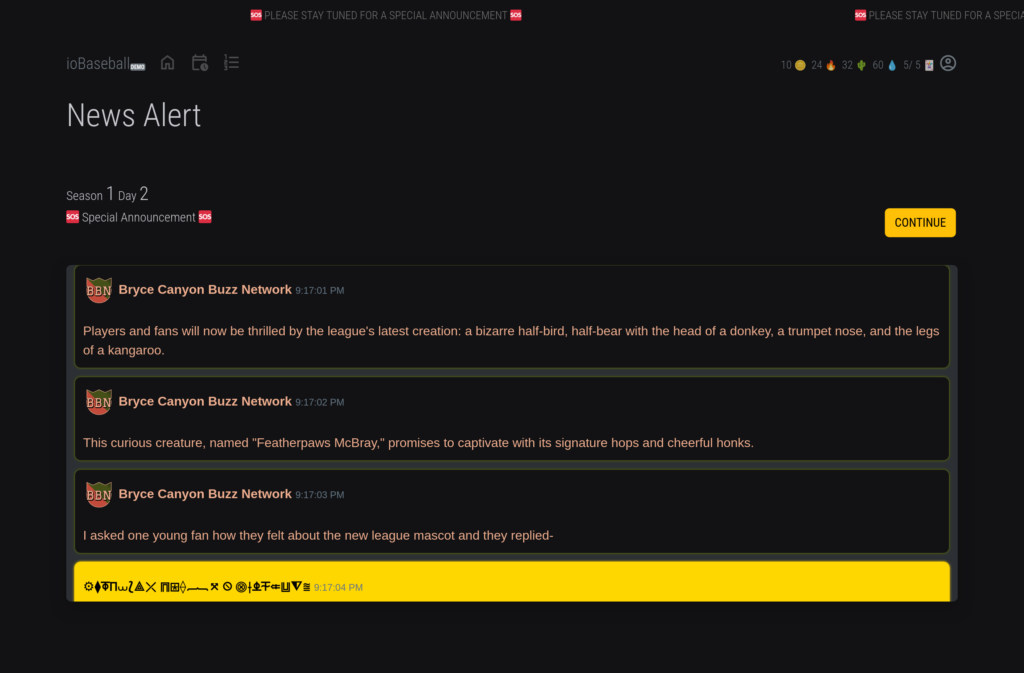
It is obvious that ioBaseball is heavily inspired by its departed predecessor. The trading cards have pixelated images sort of in the style of Balatro, but without nearly the style or wit. But it’s a demo! I’m sure, if it takes off, that there’s a universe of baseball-and-otherwise memes they can slap on those little illustrated boxes. A lot of Blaseball’s dearly missed qlurky stlyle follows over. The completed Innings are called Outings, and there’s a brief story that’s presented within the game that explains the stadium has trouble getting insurance because of angry gods, incinerated players and floods of immateria.
Will ioBaseball catch on, and rise to the levels of its deceased forebear? No one can say. The original needed a cultural event like a pandemic to spark its brief ascent to the skies, and without it soon fell again to the cold wretched earth. But ioBaseball’s three hearts are in the right place, and that matters for a lot.
* rorm, adjective: nice, good, gratifying. From Carl Muckenhoupt’s interactive fiction, “The Gostak.”
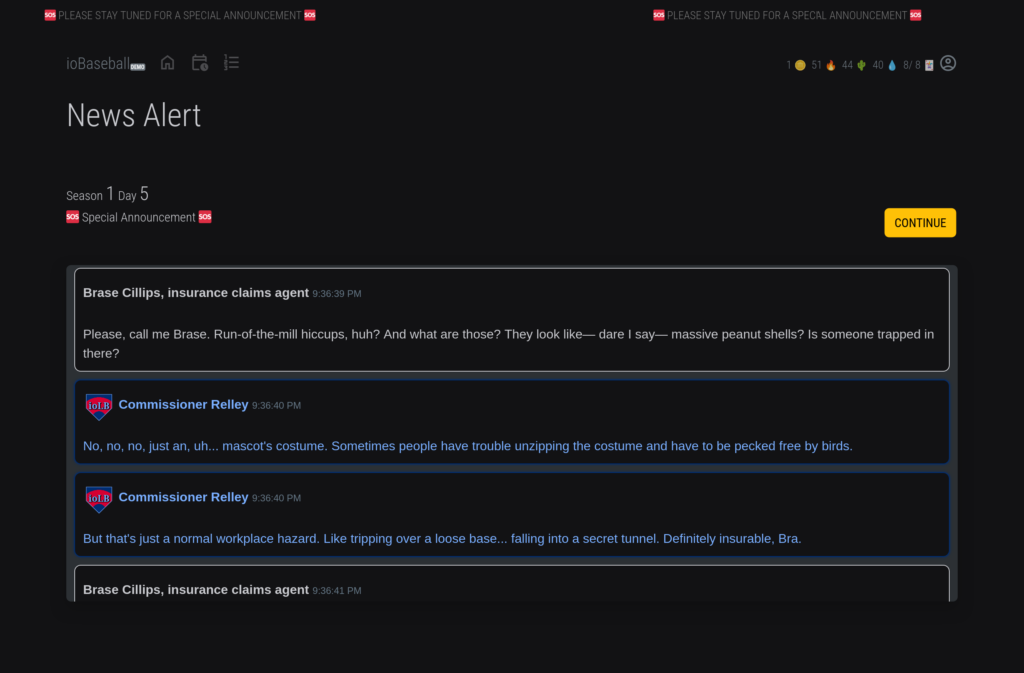
ioBaseball (web, $0) – ioBaseball’s Discord invite
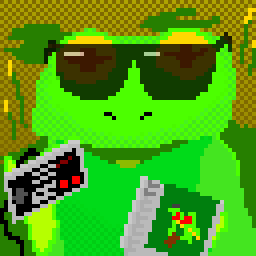
On Romhack Thursdays, we bring you interesting finds from the world of game modifications.
Every GDQ, I find out about several things that I feel are worth telling all of you about. It happened once again this year, and that’s why I’m now pointing you to an invaluable speedrunning resource, the Ocarina of Time Practice Rom.
Of course, I don’t think you’ll want to speedrun it. But if you ever want to test something out in the game and don’t want to play through the whole of OoT to do it, it could be very useful. It’s distributed in the form of a patch program, available for Windows, Mac or Linux, and you’ll have to do a bit of command-line typing to run it. And you’ll have to supply the rom file yourself, of course, but that’s the case with all the offerings proffered by our sunglasses-wearing green friend up above. The makers offer support for the Virtual Console release of Ocarina of Time, but if you choose to play it in real hardware, you should know that the Practice Rom requires the 4 MB Expansion RAM upgrade for your N64. If you came by your Nintendo 64 unit second-hand, open the little hatch on the top of the console: if the little module in there has a red top, that’s the “Expansion Pak,” as Nintendo called it. If it has a black top, then you don’t have the expansion, just the “Jumper Pak” that came standard. If there’s just a hole in there, then you don’t have either, and your system won’t work!
Let’s assume that you get it all working, and both have a new copy of the Practice Rom and a way to run it. How does it work, and what does it do? Once it’s started up, it’ll take you to the game’s title screen like usual. Press Start and you’ll be at the File Select screen as usual. Enter a name and start the file, and you’ll even be taken to the intro cutscene.
But no one says you’ll have to wait through it. Hold the R button and press L, and a menu will appear:
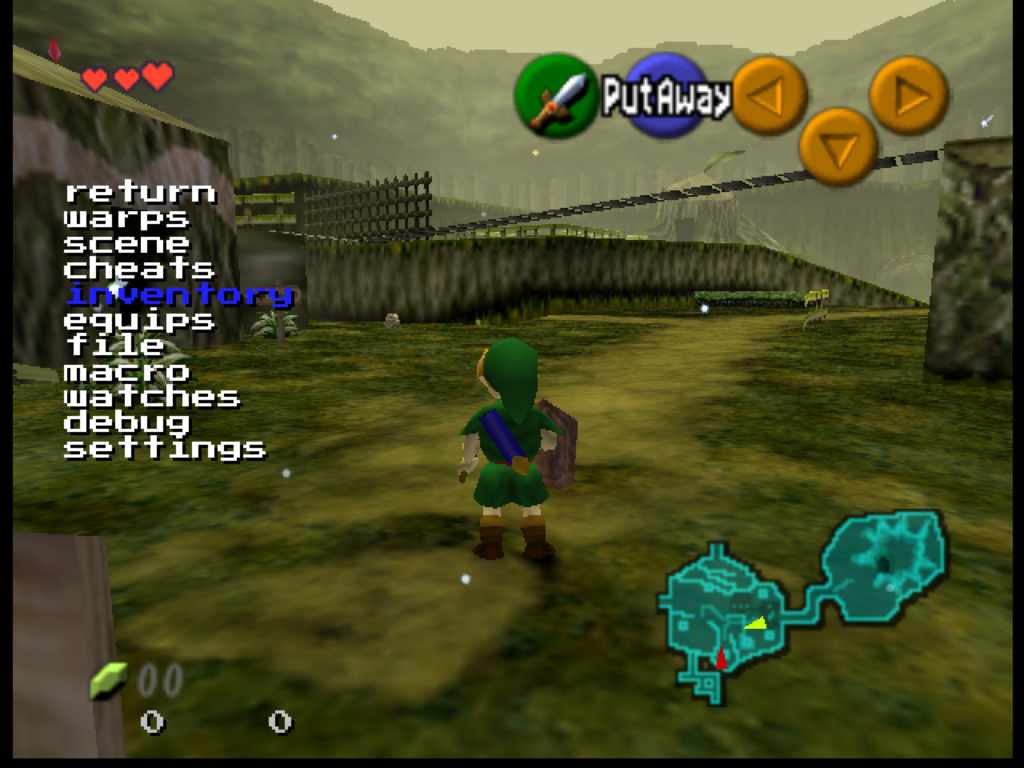
From here, you can use the Control Pad, or whatever your controller’s version of it is, to navigate this menu, while you continue to play the game, in real-time, with the Control Stick and other buttons. Pressing L selects things from the menu, and R goes back up a level.
From this menu you can warp to anywhere in the game, or give yourself any items! You can unlock the camera in 3D scenes and move it freely, or change the rendering to show collision surfaces. It even has its own save state manager. It’ll take some experimenting to find everything it can do.
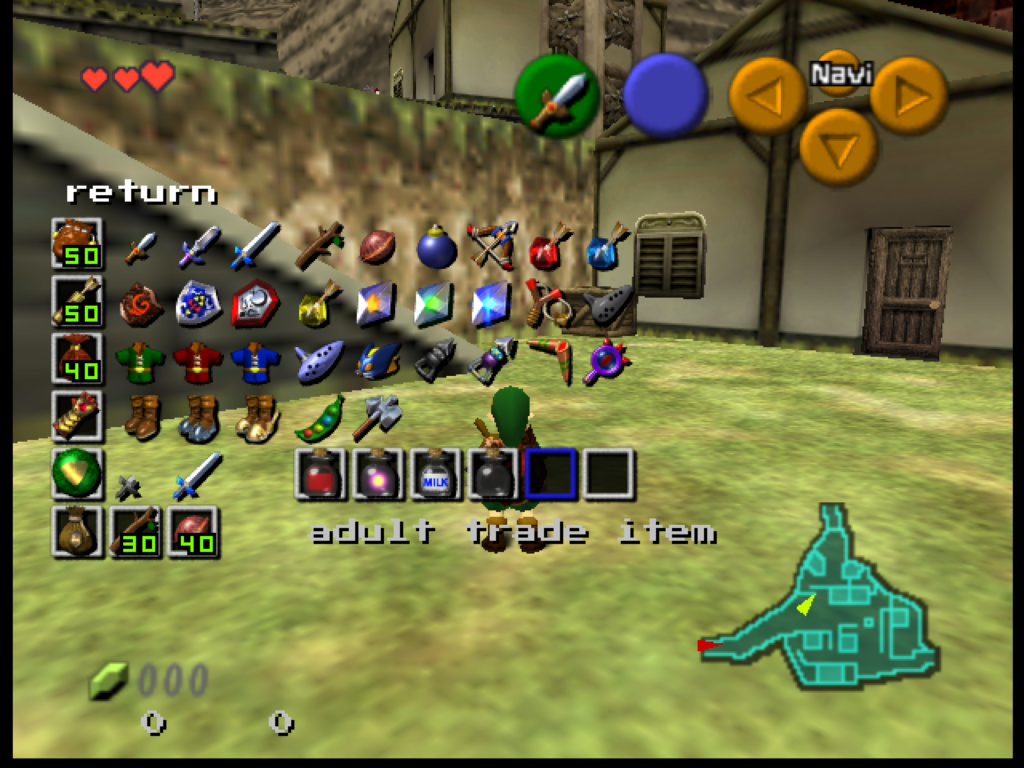
Is this useful? Well, maybe? Or maybe not. Are video games useful? I present it mostly as a curiosity. If you just want to play the game then mostly it gets in the way. It’s not a randomizer or remix, it’s just straight Ocarina, but with these extra things added. It has a full user’s manual on its website, and to make decent use of it you’ll probably need to spend some time with it. Check it out, if you’re of a mind.
OoT Practice Rom (practicerom.com)
I had a different post ready to go today, but it’s been delayed by a few days for unavoidable reasons, so let’s do another Nintendo obscurity video, this time for things that can be found “out of bounds.” There’s several interesting cases mentioned and shown off here in this video from Nintendo Unity. It’s 11 minutes long.
Some of cases shown: